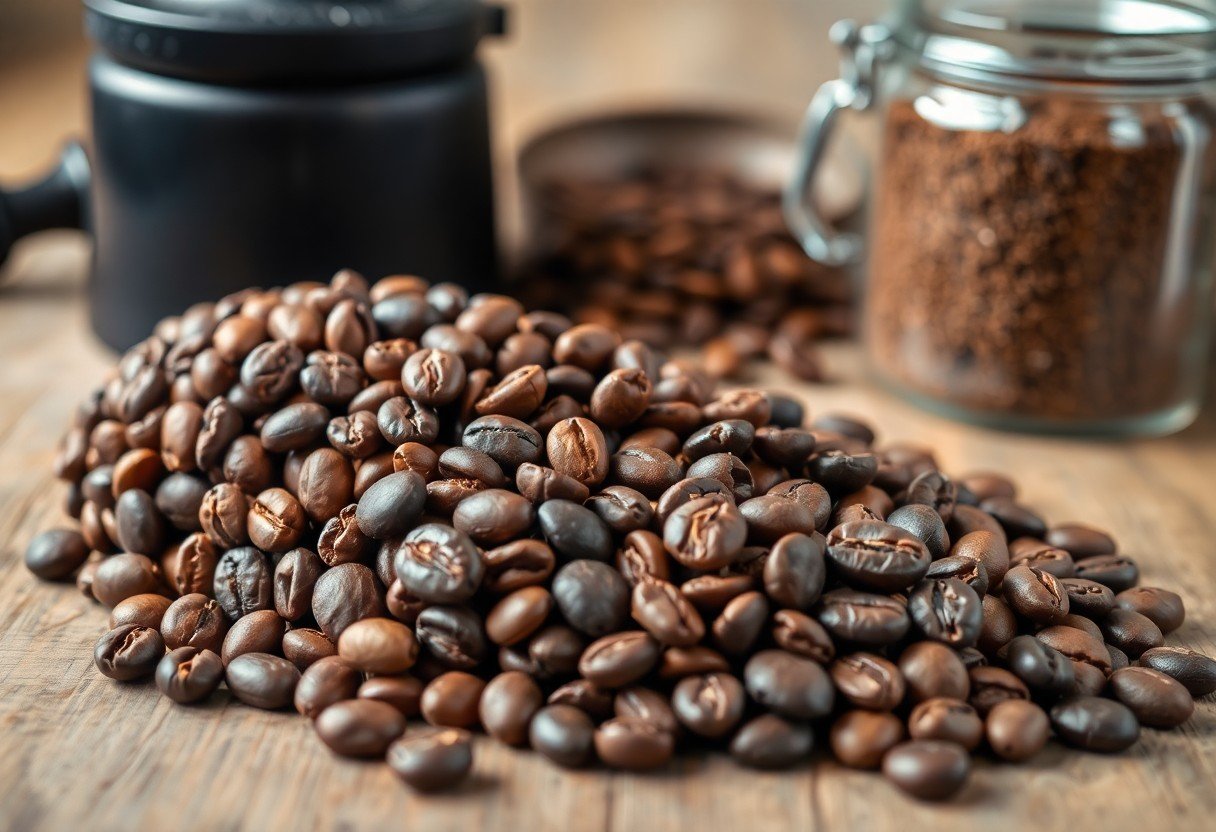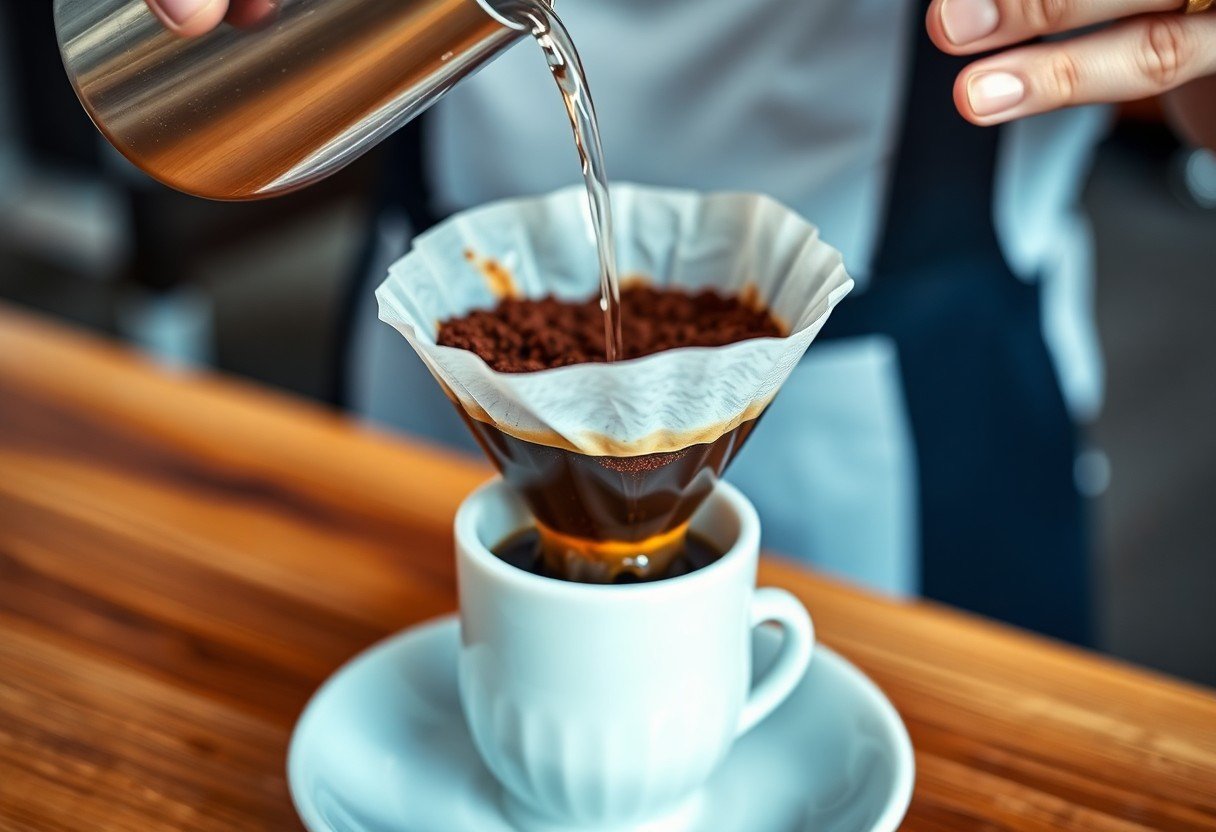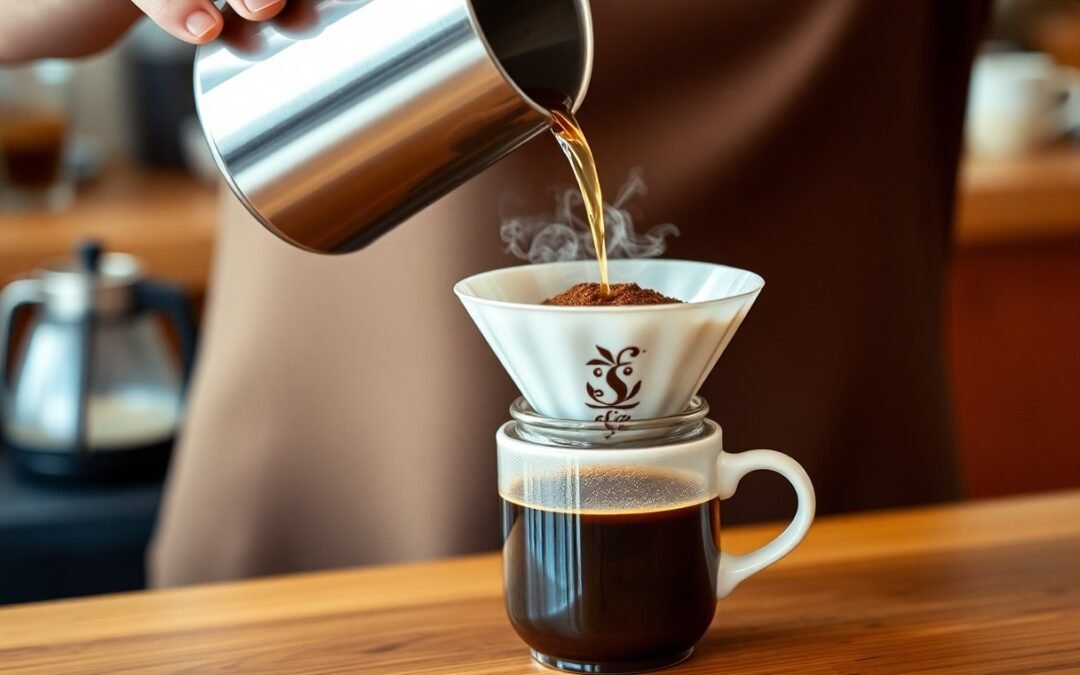With the right techniques, you can elevate your coffee brewing process to new heights, transforming your daily cup into a refined experience. Understanding the art of pouring not only enhances flavor extraction but also improves consistency in your brew. This guide will equip you with simple yet effective methods to master your pour, ensuring each cup you make is rich and satisfying. Embrace these techniques, and enjoy a more rewarding coffee ritual in the comfort of your home.

The Art of Choosing Your Beans
Selecting the right coffee beans significantly impacts your brewing experience. Factors like origin, processing method, and freshness play a vital role in the flavor and aroma of your cup. By understanding how these aspects influence coffee, you can refine your choices to suit your taste preferences and elevate your overall enjoyment.
Sourcing Quality Coffee: What to Look For
When sourcing quality coffee, focus on the origin and the producer’s reputation. Look for beans labeled as single-origin or specialty grade, which often indicate higher quality due to strict growing and processing standards. Always check the roast date to ensure freshness; beans are best used within two to four weeks of roasting for optimal flavor.
Roasting Levels and Their Flavor Profiles
The roasting process transforms the natural characteristics of coffee beans, shaping their flavor, acidity, and body. Light roasts tend to preserve the beans’ original flavors, showcasing bright acidity and fruity notes, while medium roasts offer a balanced profile with a deeper flavor. Dark roasts, on the other hand, bring out bold, smoky characteristics with chocolate or nutty undertones, often at the expense of the beans’ inherent nuances.
Precision Grinding: Why Size Matters
Grind size directly influences the flavor extraction during brewing, affecting the overall quality of your coffee. A uniform grind enhances consistency, allowing for optimal extraction of flavors and aromas. By adjusting the grind size, you can control the speed at which water interacts with the coffee grounds, impacting both the strength and taste of your drink. Understanding the relationship between grind size and extraction is necessary for achieving that perfect cup.
The Science of Grind Size and Extraction
Each brewing method requires a specific grind size to extract flavors efficiently. Finer grinds increase surface area, facilitating quicker extraction, while coarser grinds slow the process. For instance, espresso thrives on fine grinds, leading to bold flavors in under 30 seconds, whereas French press utilizes coarser grinds for a balanced brew over several minutes. Finding your sweet spot in grind size ensures you unlock the maximum potential of your beans.
Matching Grind to Brewing Method: A Guide
Tailoring your grind size to the brewing method enhances your coffee experience. For espresso, a fine grind produces concentrated flavors, while pour-over requires a medium grind for even extraction. French press benefits from coarser grounds to prevent over-extraction. Experimenting with these variations allows you to discover how different grinds affect taste, ultimately leading you to your preferred coffee profile.
Understanding the ideal grind size for each brewing method equips you with the knowledge to elevate your coffee game. For example, a typical espresso grind resembles table salt, while pour-over calls for a texture akin to granulated sugar. In contrast, a French press grind should resemble sea salt. Adjusting your grinder settings accordingly can yield dramatically different flavors—starting with a fine grind might produce a bitter taste, while a coarser grind could result in a weak brew. Experimentation within these parameters lets you fine-tune your technique for exceptional results every time.
Mastering Variables: Water and Temperature Control
Variable | Impact on Brewing
— | —
Water Quality | Influences taste, extraction efficiency, and mouthfeel.
Brewing Temperature | Affects flavor profile and aroma extraction.
The Role of Water Quality in Brewing Success
Your coffee’s flavor hinges significantly on the quality of water you use. Water should be free from impurities, with a balanced mineral content for optimal extraction. Aim for soft, filtered water containing around 150 ppm of total dissolved solids, as hard water can mask the coffee’s delicate flavors. Additionally, avoid using distilled water, which may lead to flat-tasting brews due to lack of minerals.
Perfecting Brewing Temperature for Optimal Flavor
Brewing temperature serves as a key determinant of flavor extraction. The ideal range lies between 195°F and 205°F (90°C to 96°C); temperatures outside this range can either extract too much bitterness or leave behind desirable oils and flavors. Experimenting within this temperature window allows you to reveal different notes in your coffee. Consistent temperature control can be achieved through methods such as using a thermometer or temperature-regulating devices.
Brewing Temperature Guidelines | Flavor Impact
— | —
Below 195°F | Under-extracted, sour flavors dominate.
195°F to 205°F | Balanced extraction, optimal flavors emerge.
Above 205°F | Over-extraction risks bitterness and harshness.

Pour Techniques: Elevating Your Brewing Game
Perfecting your coffee pour can significantly enhance the flavor profile of your brew. With the right techniques, you can extract the rich, complex flavors from your coffee grounds, transforming your daily cup into a refined experience. Mastering the art of pouring not only improves taste but also adds an aesthetic element to your brewing ritual, elevating the entire coffee experience.
The Mechanics of a Controlled Pour
A controlled pour requires precision and consistency. Begin by holding the kettle at a 45-degree angle and aim for a steady, thin stream of water. Focus on saturating the coffee grounds evenly to prevent channeling, which can lead to uneven extraction. Maintaining a consistent distance from the surface allows you to manage the flow rate, ensuring optimal extraction of flavors.
Advanced Techniques: Blooming and Circular Pouring
Blooming is a technique that enhances flavor by allowing carbon dioxide to escape before full brewing begins. Start by wetting the grounds with a small amount of hot water, letting them swell for 30 seconds. Follow this with circular pouring, where you gently dribble water in a spiral motion over the grounds. This method ensures even saturation and prevents over-extraction in certain areas, delivering a balanced flavor profile.
- Use about double the weight of water to coffee for blooming
- Let the coffee sit for about 30 seconds before continuing
- Adjust your pouring speed for desired brew time
- Experiment with different spiral speeds for varied flavors
| Technique | Description |
| Controlled Pour | Aiming for a steady stream to evenly saturate coffee grounds |
| Blooming | Pre-wetting grounds to release gas, improving flavor extraction |
| Circular Pouring | A spiral motion to ensure even saturation and prevent over-extraction |
Employing blooming and circular pouring together not only enhances the extraction but also contributes to a more aromatic cup. Each method brings out the unique characteristics of your coffee, highlighting subtle notes that would otherwise go unnoticed. As you practice these techniques, you’ll refine your skills and transform your brewing process into a true art form. Consider making minor adjustments to water temperature and ground size to personalize your pour for the best results.
- Experiment with water temperature for different beans
- Try various grind sizes to see how it affects flavor
- Document your pours to identify what works best
- Involve friends or family for a coffee tasting session
| Technique | Tips for Mastery |
| Blooming | Use fresh coffee for best results; adjust time based on grind |
| Circular Pouring | Practice consistency in your pouring to develop a rhythm |
Taste Testing: Refining Your Palette
As you research deeper into the world of coffee, taste testing becomes a fundamental practice for refining your palate. Engaging your senses allows you to identify subtle flavors and aromas in each brew. Start by sampling different beans from various regions, using methods such as cupping, to understand the unique characteristics of each type. By regularly tasting and taking notes, you’ll not only enhance your appreciation for coffee but also develop the skills to choose your ideal cup more confidently.
Developing a Coffee Sensory Vocabulary
Building a robust coffee sensory vocabulary enhances your ability to articulate the flavors and aromas you experience. Instead of generic descriptors like “good” or “bad,” aim for specific terms such as “chocolatey,” “fruity,” or “floral.” Familiarize yourself with tasting guides and aroma kits to better recognize and describe the wide range of notes present in different coffees. This linguistic toolbox helps you share your findings with others and deepen your coffee appreciation.
The Importance of Consistent Tasting Conditions
Consistency in your tasting environment allows for accurate comparisons and nuanced discoveries in flavor profiles. Factors such as lighting, temperature, and even the time of day can affect your perception of taste. Always use the same type of glassware or cups and ensure your water source remains identical across tastings. By minimizing external influences, you can focus on the beans themselves, leading to more reliable assessments of their characteristics.
The tasting environment should also include control over elements like background noise and aromas. A quiet space helps maintain concentration, while avoiding overlapping scents from kitchen activities or other brewing methods keeps your sensory journey clear. For effective results, try to taste at similar times each day when your senses are consistently sharp. Keeping these variables steady will reveal the true qualities of the coffee, guiding you toward your preferred flavors over time.
Summing up
On the whole, mastering the pour is key to elevating your coffee experience. By honing simple techniques such as controlling water temperature, optimizing grind size, and timing your pour, you can significantly enhance the flavor and aroma of your brew. With practice, you will develop the confidence to experiment with different methods, allowing you to create a refined and personalized cup of coffee that reflects your taste preferences. Elevate your coffee-making skills and enjoy the nuances that each carefully poured cup has to offer.
FAQ
Q: What techniques are covered in ‘Mastering The Pour’?
A: The book explores various pouring techniques, including the pour-over method, French press, and Aeropress. Each technique is detailed with step-by-step instructions for optimal extraction.
Q: Can beginners understand the content of this book?
A: Yes, ‘Mastering The Pour’ is designed for all skill levels. It provides clear explanations and visuals, making it accessible for beginners while also offering insights for seasoned coffee enthusiasts.
Q: What equipment do I need to follow the techniques in the book?
A: Essential equipment includes a kettle, grinder, coffee scale, and your choice of brewing device such as a pour-over dripper, French press, or Aeropress.
Q: Are there any tips for selecting coffee beans in the book?
A: Yes, the book provides guidance on selecting high-quality coffee beans, including how to assess freshness, roast levels, and flavor profiles that complement various brewing techniques.
Q: Does ‘Mastering The Pour’ include recipes for coffee beverages?
A: Yes, it features a variety of recipes for different coffee beverages, showcasing how to use the techniques outlined for creating unique flavors and presentations.

